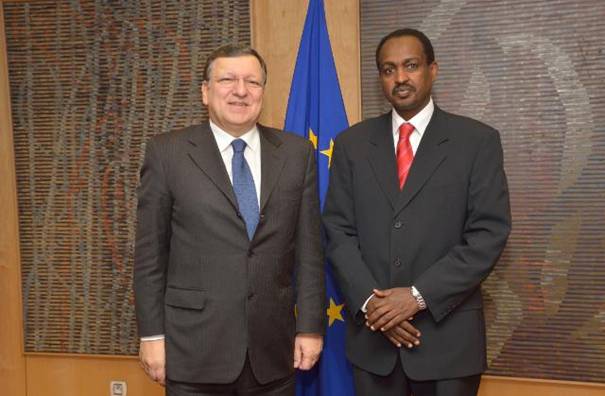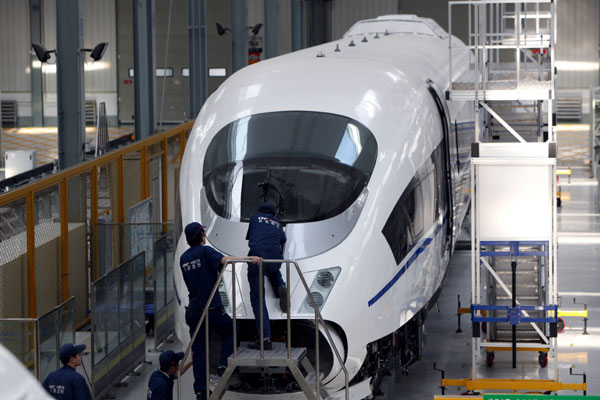Last Saturday on April 26, 2014 there was an international day in the city where we live. The city is a port city which provides a wide range of maritime and logistics services. It is the largest port in Europe and ranks as one of the top 20 world’s busiest ports. It is also the heart of the global diamond industry, both in terms of polishing, processing and trade. With a population of half a million there are quite considerable number of expatriates living in the city. There is an international school called Antwerp International School which provides education from elementary to high school.
Category: News
embassy news
ከመንግስት ኮሚዩኒኬሽን ጉዳዮች ፅህፈት ቤት በኦሮሚያ ክልል አንዳንድ ዩንቨርስቲዎች በተፈጠረ ግርግር በህይወትና ንብረት ላይ ጉዳት መድረሱን በተመለከተ የተሰጠ መግለጫ
ላለፉት አመታት ተከታታይ ዝግጅት ሲደረግበት ቆይቶ የህዝብ ውይይት የተጀመረበትንና በአዲስ አበባና በዙሪያው የሚገኘውን የኦሮሚያ ልዩ ዞንን በልማት ለማስተሳሰር የተነደፈውን የተቀናጀ የልማት ማስተር ፕላን አስመልክቶ ከፕላኑ ፋይዳና አላማ ጋር የሚቃረን መሰረተ ቢስ አሉባልታ በአንዳንድ ወገኖች በስፋት ሲሰራጭ ቆይቷል፡፡
ይህን መነሻ በማድረግም በበርካታ የክልሉ ነዋሪዎች ዘንድ ትክክለኛውን መረጃ የማወቅ ፍላጎት መኖሩን ከግምት በማስገባት የአዲስ አበባ ከተማ አስተዳደርና የኦሮሚያ ክልላዊ መንግስት የተለያዩ መድረኮችን በማዘጋጀት በእቅዱ ልማታዊ አላማና በሚያስገኛቸው ጥቅሞች ዙሪያ ማብራሪያ ሲሰጡ ቆይተዋል፤ በመስጠትም ላይ ይገኛሉ፡፡
Foreign Ministers of Ethiopia, Kenya and Uganda met with Secretary of State John Kerry (May 01, 2014)
Dr.Tedros Adhanom and Foreign Ministers of Kenya and Uganda, Ambassador Amina Mohamed and Sam Kutesa met with US Secretary of State John Kerry and Assistant Secretary for African Affairs Linda Thomas-Greenfield, Special Envoy for the Great Lakes and the Democratic Republic of the Congo Russell Feingold, Special Envoy to Sudan and South Sudan Donald Booth, and Ambassador-at-Large for Global Women's Issue Catherine Russell here in Addis Ababa. The discussion of the two sides focused on the ongoing crisis in South Sudan and on ways to stop the violence claiming lives of innocent civilians.
European Union commends Ethiopia for effective use of aid (Apr 25, 2014)
The Head of the European Union Delegation to Ethiopia, Ambassador Hebberecht Chantal, has commended the Ethiopian Government for effectual use of its development aid, pointing out that “the Government of Ethiopia has been implementing effectively the development support it gets from the European Union”. Recalling that 80% of the aid goes through the government budget or Multi-donor Trust Fund, she said that the money was properly used for the planned projects. She said “we successfully implemented the 10th European Development Fund (EDF) in the past five years, 2009-2013”.
EU-ETHIOPIA COOPERATION developing ethiopia together
Ethiopia and European Union have been development partners for over 37 years. Since the signing of the Lome I in 1975, the cooperation between Ethiopia and the European Union has been widening in scopes and coverage.
The European Union is one of the five major donor partners of Ethiopia. EU institution contributes for about €230 million a year, representing 10% of the total Official Development Aid received by Ethiopia. Together with the EU Member States support, the European Union makes available around 34% of the total aid assistance to Ethiopia.
Please click here for further information.

EU provides over €40 mln to Ethiopia, UNICEF
Addis Ababa, 17 April 2014 (WIC) -The European Union (EU) yesterday announced a €40.2 million grant to the Ministry of Health and UNICEF through the “Enhancing Skilled Delivery in Ethiopia (ESDE)” project.
This new funding from the EU will be used to scale-up maternal health and new-born care for a three year period (2014-2016). Of this grant, €20 million is allocated to the MDG Pool Fund of the Federal Ministry of Health (FMoH) and the remaining half to UNICEF.
Addis Ababa among the 10 Fastest-Emerging Global Cities
Chicago-based consulting firm A.T. Kearney is predicting the next generation of global cities, based on the speed with which they are catching up to world capitals. The "Emerging Cities Outlook," released Monday, analyzed 34 cities in low- and middle-income countries, measuring development in business activity, innovation and ability to attract people to live there.

Breakthrough in riding the rails in Ethiopia
AddiAbaba: April 14, 2014 (FBC) - As dusk falls on Addis Ababa, it is easy to spot the shadows of the giant cranes that are busy laying the rails for Ethiopia's ambitious light-rail transit system.
The Great Ethiopian Renaissance Dam – a Monument Being Erected By All Ethiopians for the Edification of Ethiopia
Ethiopians have been using various art forms throughout the ages to vent their frustration over our inability to put the river Nile to meaningful use.
The fact that we have been under the yoke of poverty for so long while nature has endowed us with a precious gift like the Nile has always infuriated and made us ashamed in equal measures. All this sadness and frustration however, is now giving way to determination and optimism with the laying of the cornerstone of the Great Ethiopian Renaissance Dam (GERD) some three years ago.
The current generation of Ethiopians is staking its claim to history by displaying the determination to undertake a monumental project that many had thought we would not dream of let alone embark on. Currently the construction of the GERD is a third of the way through.
The entire process–including the design, funding and execution of the project– is owned and driven by the people and government of Ethiopia. The GERD is a harbinger of a new era for a country whose people are striving to make history by making poverty, a source of national embarrassment for far too long, a thing of the past. It heralds a bright future for a country that aspires not only to rid itself of poverty but also to be a land of democracy and justice. It was not an easy thing for Ethiopia when it set out to build the dam three years ago.
The country knew it could not obtain a loan or a grant from overseas to finance the construction. Meanwhile, ever since the project was announced, foreign enemies and a handful of internal elements opposed to the Ethiopian government have been hard at work to discredit the project. However, the people of Ethiopia have set their political differences aside and managed to overcome these daunting challenges to allow the construction to reach the critical stage it has reached now.
The GERD cannot be a cannon fodder that forces with sinister motive use to sow discord between the people of Ethiopia for it is a monument being erected by them with a shared vision. Any attempt to use the dam for political consumption is bound to steer one on a collision course with the Ethiopian people and is akin to stirring a hornet’s nest.
The historic and humiliating victory that Ethiopia inflicted on the invading Italian army at Adowa in 1896, in which all black people take pride, was a result of the heavy sacrifice paid by all Ethiopians. Just as no one can deny to whom the victory belongs, it is the same thing with the dam. It also belongs to the Ethiopian people.
Ethiopia’s first expressway nears completion
The Addis Ababa-Adama expressway in Ethiopia will be first expressway in Ethiopia and East Africa when complete and also the first toll road in the nation. It will connect the capital city Addis Ababa to Adama in Nazareth.
Construction started in April 2010 and is scheduled to be complete in April 2014. The project is estimated to cost US$612 million and when complete the expressway will be able to accommodate 15,000 vehicles per day. The project is financed through a US$350 million loan from Export-Import (Exim) Bank, with the remaining US$262 million coming from the Ethiopian Government.
Constructed by Chinese Communications Construction Company (CCCC) on behalf of the Ethiopian Roads Authority (ERA), the new road uses advanced technologies such as a traffic management centre and intelligent transportation systems (ITS) for effective operation, together with overpasses, underpasses and interchanges. ITS technologies include traffic cameras and variable message signs (VMS) for effective traffic management and incident management.
Tolling is expected to be implemented on the Addis Ababa-Adama expressway, a first for Ethiopia. Toll gates will be installed at Addis Ababa and Adama, as well as at the six other interchanges. The toll road will reduce the travel time to around 40 minutes from the average two hours between Addis Ababa and Adama.
Ethiopia is one of the fastest growing nations in the world, but poor transportation facilities have become a bottleneck to the growth of agriculture in the country thereby affecting economic development. The Ethiopian Government has undertaken projects to improve the country’s transportation network and plans to complete 64,000 kilometres of road network by 2015.
The existing Addis Ababa-Adama road carries 20,000 vehicles per day and is one of the busiest routes in the country. The road is heavily congested, which is causing frequent accidents. The new highway will help resolve these issues and contribute to fuel savings.

